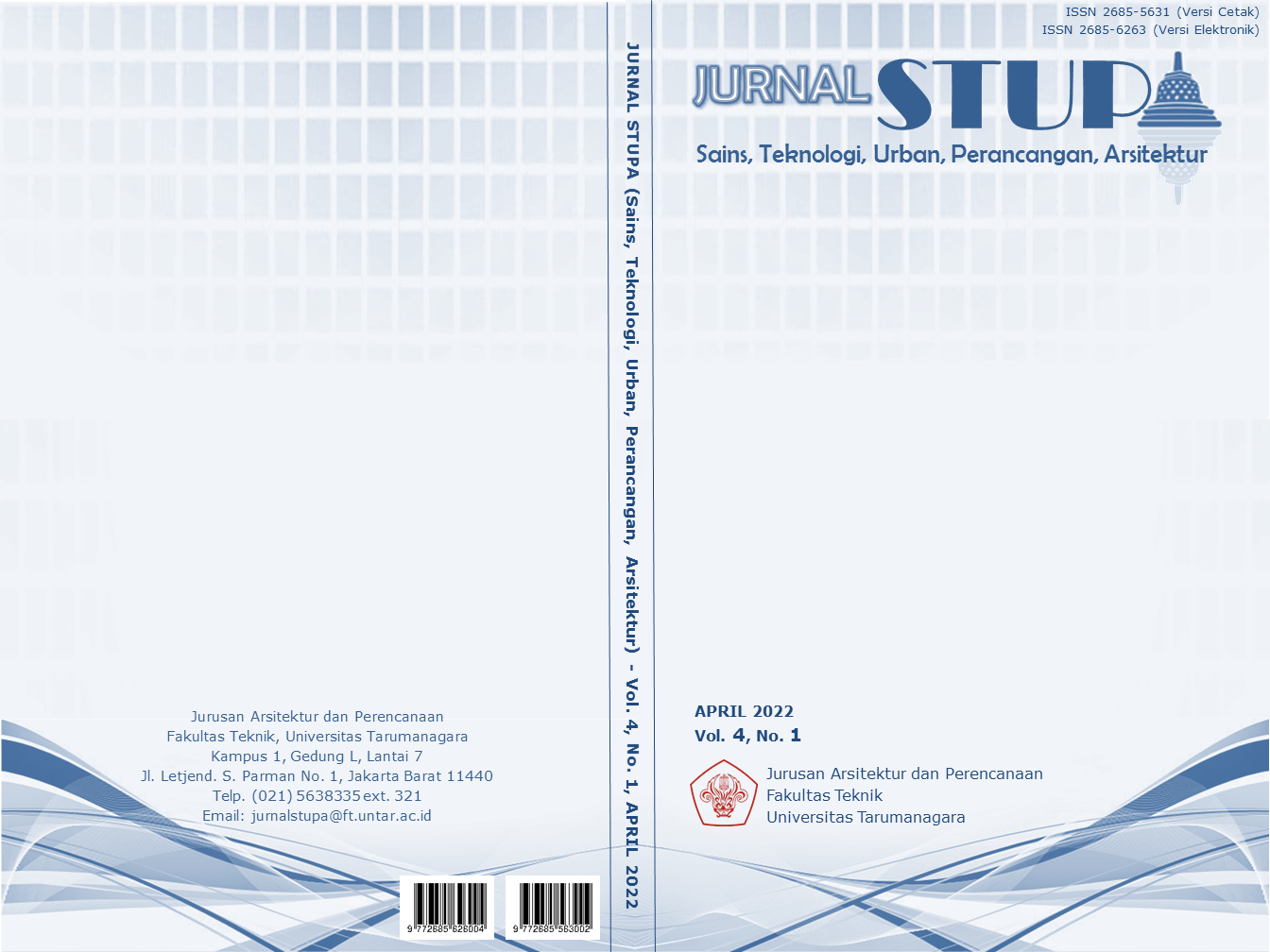KONSEP DESAIN RUANG KERJA SETELAH PANDEMI COVID-19
Main Article Content
Abstract
The phenomenon of the Covid-19 pandemic affects the decline in productivity and work efficiency throughout the world and also in Indonesia. This decrease in productivity caused by changes in habits is one of the problems related to the use of buildings, systems or office units that adapt to the pandemic needed to be shown to prepare for an adaptation. With the aim of creating new workspace design concepts after the pandemic, typological methods related to distance, ergonomics and architectural psychology related to personal, social, and public spaces. As well as case studies to develop the relationship between typology and architectural psychology. The result is an office design with open workspaces, recreation rooms, and sports facilities where these spaces provide flexibility which has become a new need for work during a pandemic.
Keywords: covid-19; health; pandemic; productivity; Office
Abstrak
Fenomena pandemi Covid-19 mempengaruhi penurunan produktivitas dan efisiensi kerja di seluruh dunia dan juga di indonesia. Penurunan produktivitas ini disebabkan oleh perubahan kebiasaan merupakan salah satu masalah terkait penggunaan bangunan, sistem atau unit kantor yang menyesuaikan pandemi diperlukan yang ditunjukkan untuk menyiapkan sebuah adaptasi. Hal tersebut bertujuan untuk menciptakan konsep desain ruang kerja baru setelah pandemi. Metode tipologi terkait jarak, ergonomik dan psikologi arsitektur terkait ruang personal, sosial, dan publik digunakan sebagai pendekatan desain. Studi kasus digunakan untuk mengembangkan relasi antara tipologi dengan psikologi arsitektur. Hasil studi adalah sebuah desain kantor dengan ruang open workspace, ruang rekreasi, dan fasilitas olahraga dimana ruang tersebut memberikan sebuah fleksibilitas yang menjadi kebutuhan baru dalam bekerja disaat dan sesudah pandemi.
Article Details
References
Barnes, M., & E., P. (2020). Challenges of “Return to Work” in an Ongoing Pandemic. Massachusetts: Massachusetts Medical Society.
Bloom, N., Bunn, P., Mizen, P., Smietanka, P., & Thwaites, G. (2021). The Impact of Covid-19 on Productivity. CEPR.
Duffy, F. (1964). Skill: Bürolandschaft. Architectural Review 135, 148.
Duffy, F. (1993). The Responsible Workplace. Oxford: Butterworth Architecture,.
Duffy, F. (1998). The New Office." Facilities Design & Management. 76-79.
Duffy, F. (1998). Today's Office. The Architectural Review 201, 96.
Frankel, N., Augustin, S., & Coleman, C. (2009). Place Advantage: Applied Psychology for Interior Architecture. London: Wiley.
Gallo, G., Sala, M., & Sayigh, A. (1988). Architecture: Comfort and Energy. New York: Elsevier Science.
Liu, H. (2012). Distributed Workplace for Facebook. Inc: a new Office typology for the 21st century workstyle. Architecture Thesis Prep.
Moran, J. (2010). Queuing for Beginners: The Story of Daily Life From Breakfast to Bedtime. Croydon: Profile Books.
OfficingNow. (2017, March 7). 9 Office Types You Probably Don’t Know About. Diambil dari OfficingNow: https://medium.com/@OfficingNow/different-types-of-offices-and-workspaces-fad62b2c8b84
Porteous, C. (2021, August 21). Collaborative Office Design: Does it Help or Hinder Productivity? Retrieved from OfficeInteriors: https://www.officeinteriors.ca/blog/collaborative-office-design/
Sundstorm, E., & Sundstorm, M. G. (1986). Work Places : The Psychology of the Physicial Environment in Offices and Factories. Melbourne: Cambridge University Press.
Vidler, A. (2015). The Third Typology and Other Essays. Actarbirkhauser.
Saputra, G. N., & Natalia, H. A. (2021). Perubahan Pada Lingkungan Kerja selama Pandemi : Dampaknya terhadap Produktivitas Karyawan. Jayapangus Press, 305-306.



